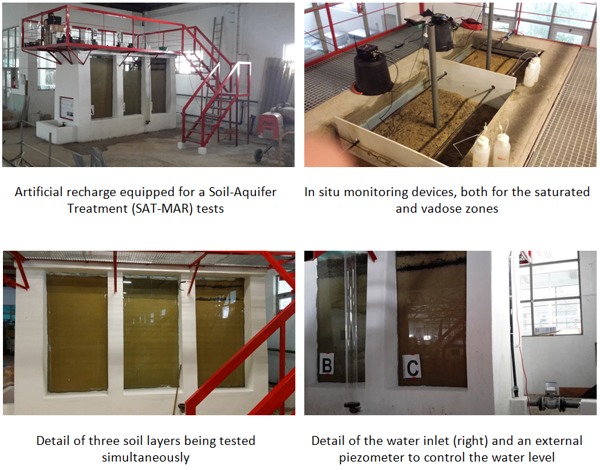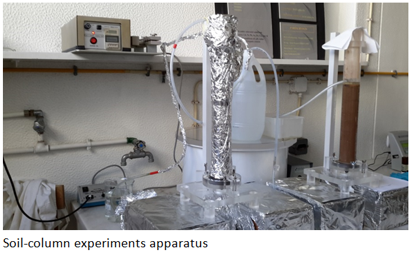Artificial Aquifer Facility
|
Artificial Aquifer Facility The artificial aquifer facility (or physical sandbox model) is used to conduct laboratory large scale infiltration and tracer tests to determine the soil:
The facility is equipped with three piezometers, Teflon cups and monitoring devices such as multiparametric probes (level, pH, temperature, electrical conductivity and redox) to assess flow and transport.  A complementary soil-column experiments apparatus is equipped to study the risk of pollutant leaching through soils and other materials using (1) batch experiments to assess the maximum concentrations of release in equilibrium conditions and (2) soil-columns facilities to quantify the movement of water and contaminants in dynamic conditions. Several other complementary tests can be performed to soil samples, like: humidity, density, porosity, and granulometry.  |




